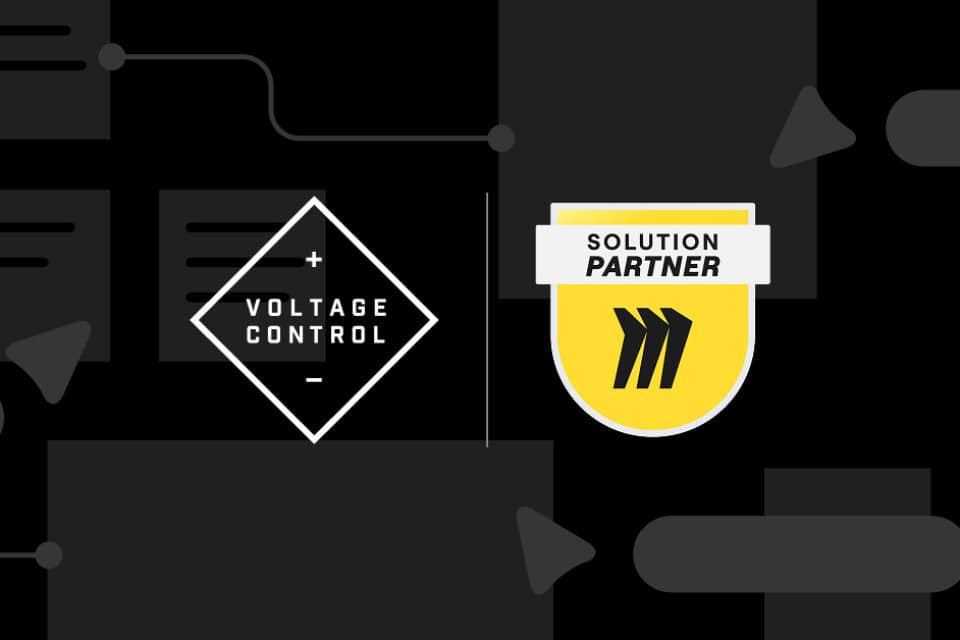Table of contents
Innovation is not just a desirable trait; it’s a critical component of success. Companies that fail to innovate risk falling behind, losing their competitive edge, and ultimately becoming irrelevant. However, innovation doesn’t happen in a vacuum. It requires an environment where creativity is nurtured, where risk-taking is encouraged, and where failures are seen as stepping stones rather than setbacks. At the heart of such an environment lies psychological safety—a concept that has gained significant attention in recent years, but one that is still often misunderstood or overlooked in practice.
Psychological safety refers to the shared belief within a team that it is safe to take interpersonal risks. It is the assurance that one can speak up, offer new ideas, admit mistakes, or challenge the status quo without fear of negative consequences such as embarrassment, rejection, or punishment. When psychological safety is present, team members feel comfortable being themselves, which fosters a culture of openness, trust, and collaboration. This is the kind of culture where innovation thrives because individuals are free to explore uncharted territories without the fear of being judged or penalized.
In this blog post, we will delve into the critical role psychological safety plays in fostering innovation. We will explore how to cultivate this essential component within teams, the connection between psychological safety and trust, the importance of reframing failure, strategies for ensuring every voice is heard, and how to handle conflict constructively. We will also provide actionable steps for leaders and facilitators to implement these concepts in their own organizations. By the end of this post, you will have a comprehensive understanding of how to create and maintain a psychologically safe environment that not only supports innovation but drives it.
Fostering Psychological Safety
Psychological safety is the cornerstone of any innovative team. Without it, creativity is stifled, and meetings often become echo chambers where only the most conservative, well-rehearsed ideas are shared. This not only limits the potential for breakthrough innovations but also diminishes the overall energy and engagement within the team. When participants don’t feel safe, they are less likely to take the risks necessary to propose bold ideas or think outside the box.

To foster psychological safety, facilitators must be intentional in their approach. It begins with creating a culture of respect and empathy, where understanding takes precedence over persuasion. Facilitators should actively encourage the sharing of ideas, no matter how incomplete or unconventional they may seem. This can be achieved by setting clear expectations that all contributions are valued and by providing equal air time for all participants. When people feel that their input is genuinely appreciated, they are more likely to engage fully and bring their most creative ideas to the table.
Moreover, focusing on progress rather than perfection is crucial in creating a psychologically safe environment. Perfectionism can be a significant barrier to innovation, as it discourages experimentation and the exploration of new ideas. Facilitators can combat this by celebrating incremental improvements and framing challenges as opportunities for learning and growth rather than as failures. This approach not only fosters a more open and creative atmosphere but also encourages continuous improvement and resilience in the face of obstacles.
Developing Trust
Trust is often hailed as the foundation of effective teamwork, but it’s essential to recognize that trust doesn’t emerge in isolation. It is built on the groundwork of psychological safety. When team members feel safe to be themselves—expressing their ideas, admitting mistakes, and offering honest feedback—trust naturally follows. This trust is not just a nice-to-have; it’s a critical element of a high-performing team that can innovate and adapt in the face of challenges.
In environments where psychological safety is prioritized, team members are more willing to take interpersonal risks, such as sharing unpolished or controversial ideas. They feel confident that their contributions will be met with respect rather than criticism. This sense of security fosters deeper connections and stronger relationships within the team, which in turn builds trust. When trust is present, collaboration becomes more fluid and effective, as team members are willing to engage in open, honest dialogue without fear of negative repercussions.
Leaders and facilitators play a pivotal role in cultivating this trust. By modeling vulnerability and openness, they set the tone for the rest of the team. For example, when a leader admits their own mistakes or shares a learning experience, it signals to the team that it’s safe to do the same. This creates a ripple effect, encouraging others to step out of their comfort zones and engage more fully in the collaborative process. As trust deepens, so does the team’s ability to innovate, as members are more likely to challenge the status quo and support one another in the pursuit of new ideas.
Embracing Failure
Innovation and risk-taking are intrinsically linked, but with risk comes the potential for failure. However, in a psychologically safe environment, failure is not viewed as something to be avoided at all costs; rather, it is embraced as an integral part of the creative process. This shift in perspective is essential for teams that want to push boundaries and explore new ideas without the paralyzing fear of making mistakes.
In many traditional workplace cultures, failure is stigmatized, leading to a fear-based approach where team members are reluctant to take risks. This fear of failure can be a significant barrier to innovation, as it stifles creativity and discourages experimentation. To counteract this, leaders and facilitators must actively work to reframe failure as a valuable learning opportunity. By doing so, they create an environment where team members feel empowered to take calculated risks and explore bold ideas, knowing that even if they don’t succeed, the experience will yield valuable insights.
This reframing of failure involves several key strategies. First, leaders should openly discuss the importance of failure in the innovation process, highlighting examples where setbacks have led to significant breakthroughs. Second, when failures occur, they should be debriefed constructively, focusing on what can be learned rather than assigning blame. This approach not only normalizes failure but also reinforces the idea that mistakes are a natural part of the journey toward innovation. Finally, leaders should celebrate the effort and courage involved in taking risks, regardless of the outcome. This recognition helps to build a culture where failure is not feared but embraced as a necessary step toward success.
Ensuring Every Voice is Heard
Collaborative decision-making is a powerful process that brings together diverse perspectives to create more informed and effective outcomes. However, its success hinges on the presence of psychological safety. In environments where safety is lacking, meetings can quickly devolve into scenarios where only a few dominant voices are heard, while others are silenced or overlooked. This not only undermines the quality of the decisions made but also erodes the sense of inclusivity and engagement within the team.

For collaborative decision-making to be truly effective, facilitators must actively work to ensure that every voice is heard. This starts with creating a culture of transparency, where participants feel comfortable sharing their thoughts and opinions without fear of judgment. Facilitators can use various techniques to achieve this, such as establishing ground rules that promote equal participation, actively soliciting input from quieter team members, and using structured decision-making processes that allow everyone to contribute.
Another key aspect of fostering collaborative decision-making is the emphasis on the value of diverse perspectives. When team members come from different backgrounds or have varying levels of experience, they bring unique insights that can lead to more innovative and well-rounded solutions. However, these diverse perspectives can only be leveraged if team members feel safe to express them. Facilitators should encourage open dialogue and create opportunities for team members to share their ideas in a way that feels comfortable to them, whether through verbal contributions, written input, or anonymous feedback mechanisms.
Ultimately, when every voice is valued and heard, the decisions made are more likely to reflect the collective wisdom of the group. This not only leads to better outcomes but also strengthens the team’s sense of ownership and commitment to the decisions made. By prioritizing psychological safety in the decision-making process, leaders can ensure that their teams are fully engaged and capable of achieving their highest potential.
Turning Tension into a Catalyst for Growth
Conflict is an inevitable part of teamwork, especially in high-performing teams where passionate, diverse individuals come together to achieve a common goal. While conflict can be uncomfortable, it’s important to recognize that it is not inherently negative. When handled constructively, conflict can serve as a powerful catalyst for growth, innovation, and stronger team dynamics. However, the key to harnessing the positive potential of conflict lies in the presence of psychological safety.
In a psychologically safe environment, team members feel comfortable addressing conflicts openly and honestly. They trust that their colleagues will listen to their concerns and engage in dialogue without resorting to blame or defensiveness. This creates a space where disagreements can be explored in a productive manner, leading to deeper understanding and more creative problem-solving. Rather than avoiding conflict or allowing it to fester, teams with high psychological safety are able to confront issues head-on and use them as opportunities for learning and improvement.
Leaders and facilitators play a crucial role in guiding teams through conflict. By setting the tone for how conflicts are handled, they can help to ensure that disagreements are approached with a mindset of curiosity and collaboration rather than competition. This might involve encouraging team members to express their viewpoints fully, asking open-ended questions to explore underlying concerns, and helping the team to identify common goals and shared values. Additionally, leaders should model constructive conflict resolution by remaining calm, empathetic, and focused on finding solutions rather than assigning blame.
When conflict is approached as a learning opportunity, it can lead to more innovative solutions and stronger, more resilient teams. By prioritizing psychological safety, leaders can create an environment where conflict is not feared but embraced as a necessary part of the team’s growth and development. This approach not only helps to resolve issues more effectively but also strengthens the team’s ability to navigate future challenges with confidence and collaboration.
Conclusion
Creating a culture of psychological safety is not a one-time effort; it’s an ongoing commitment that requires consistent effort, attention, and reinforcement. As we have explored throughout this post, psychological safety is the bedrock upon which trust, collaboration, and innovation are built. It is the foundation that allows teams to take risks, embrace failure, engage in meaningful dialogue, and navigate conflict constructively. Without it, teams are likely to fall into patterns of safe, predictable behavior that stifles creativity and limits their potential.
For leaders and facilitators, the journey toward building and maintaining psychological safety in teams involves a proactive approach. This includes not only fostering an environment where every voice is heard and valued but also modeling the behaviors that encourage openness, vulnerability, and continuous learning. It also means being vigilant in addressing any signs that psychological safety is lacking, such as a lack of participation in meetings, reluctance to share ideas, or avoidance of difficult conversations.
The benefits of prioritizing psychological safety are immense. Teams that operate in such an environment are more engaged, more innovative, and more capable of achieving their collective goals. They are also better equipped to handle the challenges and uncertainties of today’s dynamic business environment. By committing to the principles of psychological safety, leaders can unlock the full potential of their teams, paving the way for continuous improvement, growth, and success.


